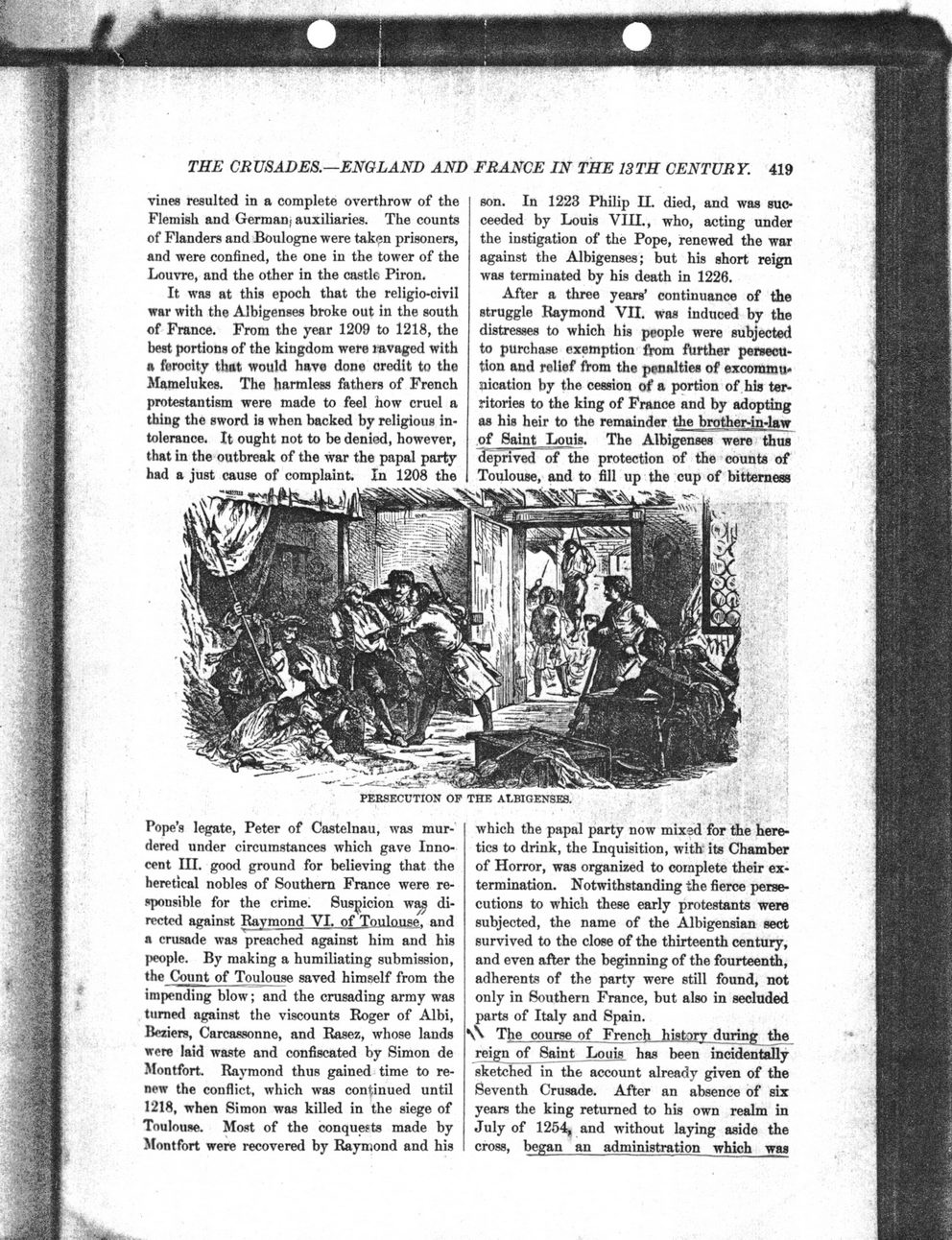This text was obtained via automated optical character recognition.
It has not been edited and may therefore contain several errors.
THE CRUSADES.—ENGLAND AND FRANCE IN THE 13TH CENTURY. 419 vines resulted in a complete overthrow of the Flemish and German) auxiliaries. The counts of Flanders and Boulogne were taken prisoners, and were confined, the one in the tower of the Louvre, and the other in the castle Piron. It was at this epoch that the religio-civil war with the Albigenses broke out in the south of France. From the year 1209 to 1218, the best portions of the kingdom were ravaged with a ferocity that would have done credit to the Mamelukes. The harmless fathers of French protestantism were made to feel how cruel a thing the sword is when backed by religious intolerance. It ought not to be denied, however, that in the outbreak of the war the papal party had a just cause of complaint In 1208 the son. In 1223 Philip II. died, and was succeeded by Louis VIII., who, acting under the instigation of the Pope, renewed the war against the Albigenses; but his short reign was terminated by his death in 1226. After a three years’ continuance of the struggle Raymond VII. was induced by the distresses to which his people were subjected to purchase exemption from further persecution and relief from the penalties of excoramu* aication by the cession of a portion of his territories to the king of France and by adopting as his heir to the remainder the brother-in-law of Saint Louis. The Albigenses were thus deprived of the protection of the counts of Toulouse, and to fill up the cup of bitterness PEBSECUTION OF THE ALBIGENSES. Pope’s legate, Peter of Castelnau, was murdered under circumstances which gave Innocent III. good ground for believing that the heretical nobles of Southern France were responsible for the crime. Suspicion was directed against Raymond VI. of Toulouse, and a crusade was preached against him and his people. By making a humiliating submission, the Count of Toulouse saved himself from the impending blow; and the crusading army was turned against the viscounts Roger of Albi, Beiiers, Carcassonne, and Rasez, whose lands were laid waste and confiscated by Simon de Montfort. Raymond thus gained time to renew the conflict, which was continued until 1218, when Simon was killed in the siege of Toulouse. Most of the conquests made by Montfort were recovered by Raymond and his which the papal party now mixed for the heretics to drink, the Inquisition, with its Chamber of Horror, was organized to complete their extermination. Notwithstanding the fierce persecutions to which these early protestants were subjected, the name of the Albigensian sect survived to the close of the thirteenth century, and even after the beginning of the fourteenth, adherents of the party were still found, not only in Southern France, but also in secluded parts of Italy and Spain. S\ The course of French history during the reign of Saint Louis has been incidentally sketched in the account already given of the Seventh Crusade. After an absence of six years the king returned to his own realm in July of 1254, and without laying aside the cross, began an administration which was

King Louis IX Bourbon The-Crusades-(3)